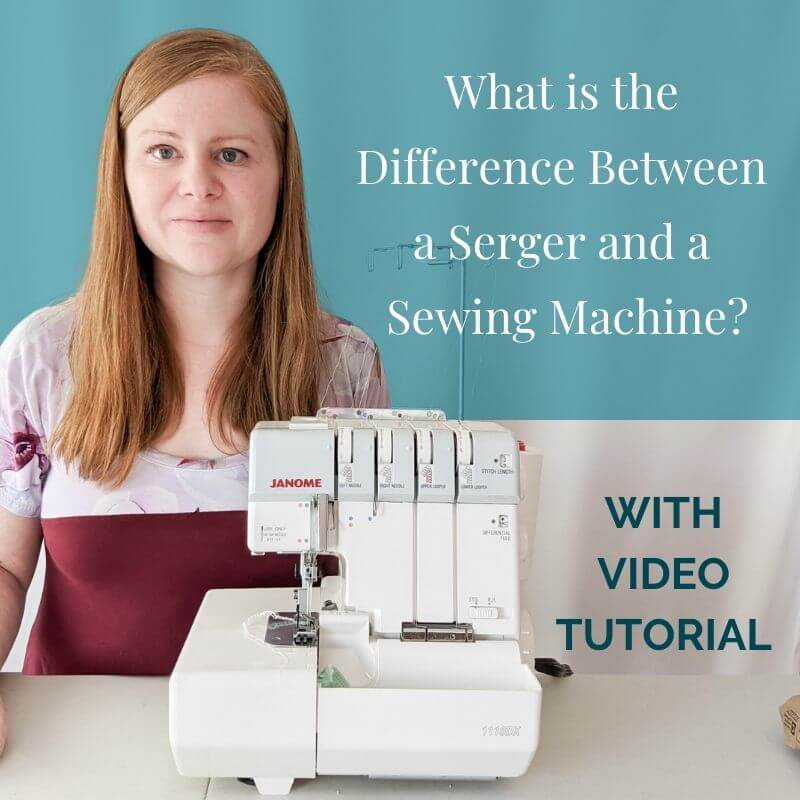
Have you ever wondered what a serger (or overlock machine) is, and if you should get one? In this blog post I'm going to cover what a serger does, the differences between a serger and a sewing machine, and why you DON'T need one (but might want one!)
I cover this information both in this video, and in the blog text below the video.
If you liked this video, please check out more like it on our YouTube channel! You can also subscribe and click the bell to get notifications when we post new video tutorials 🙂
A serger's primary purpose is to sew seams. It does this by sewing a straight stitch that is interlocked with a series of loops, that "overlock" the edge of the seam. This makes the seam look more professional, and it prevent fraying in woven fabrics.
A lot of regular sewing machines also have an overlock function, but there are a number of differences between an overlock stitch on a sewing machine and a serged seam.
A serger has a knife, that cuts off any excess seam (trimming it down to 1/4" or 6mm) and makes it the perfect width for the loops.
When a sewing machine does an overlock stitch, you have to cut off any excess yourself, and then position your fabric accurately in order to get the stitch to cover the full width of the seam. This can take some practice.
A serger uses thread cones, instead of standard spools of thread. The cones are typically less expensive than regular thread (for the amount you get), which is nice since overlocking uses a lot of thread.
The type of needles used in a serger will vary - you'll want to read your serger manual to find out what needles are recommended for your model.
Serging requires you to use 3 or 4 cones of thread at a time - for a 3 thread overlock stitch you use 1 needle and 2 loopers, and for a 4 thread overlock stitch you use 2 needles and 2 loopers.
A 3 thread stitch is typically used to finish a seam after it's already been sewn on a sewing machine, and a 4 thread stitch is typically used to sew the seam and finish it at the same time. The 4 thread stitch is much stronger, as it uses two parallel rows of straight stitch, combined with the loops.
Sergers have a number of setting that affect the stitch, but the main one that isn't typically available on a sewing machine is called DIFFERENTIAL.
Sergers typically have two sets of feed dogs (metal ridges that move and guide the fabric through under the presser foot), whereas a sewing machine has just one. The two sets can move at different speeds, and this is controlled by the differential setting.
A differntial setting of 1.0 means both feed dogs are moving at the same speed. Most of the time, this is where you want it to be.
But if your fabric stretches out of shape too easily, raising the differential can move the fabric closer together and prevent the stretching.
Other serger settings than can be adjusted (like a sewing machine) are stitch length and tension.
The short answer is - no. A sewing machine can sew and finish seams in its own way - it's just not as quick or convenient as a serger.
Sergers are definitely helpful for sewing knits, as the two sets of feed dogs help prevent them from getting stretched out of shape (even at a 1.0 differential - which is recommended unless your seams are stretched out), and it produces a nice stretchy seam.
They are also helpful for wovens, allowing you to very quickly and easily finish the seams to prevent fraying.
If you have any other questions about sergers, please feel free to drop them in the comments - thanks for reading!